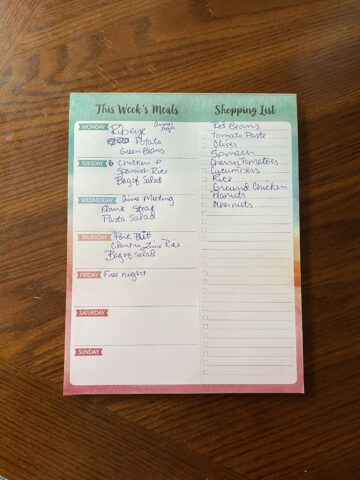There are so many things you can do to improve your finances and grow your wealth. One of the best ways to improve your finances is through using sinking funds.
Sinking can help you handle expenses that are sporadic, but still need to be budgeted for. Here’s our guide to creating and using sinking funds.

What is a Sinking Fund
If you are new to building wealth and improving your finances, you may not know what a sinking fund is, but they are so valuable to helping you grow financially.
A sinking fund is an account that has a certain goal or dollar amount tied to it for a specific reason, and is funded periodically until the goal amount is met. Once that goal is met, the money stays in the account until the goal/event that the money was saved for happens.
Here’s an example of a sinking fund: let’s say you pay your car insurance annually because it is cheaper than saving each month. Instead of having your budget take a bit in the month you are billed, you save a smaller amount each month until you have that annual premium amount saved in the account.
Why Utilize a Sinking Fund
Sinking funds are earmarked for certain goals or events. Often, people will set up sinking funds for things like Christmas, vacation or parties you’re hosting. By setting this money aside for a specific reason--as opposed to dipping into your accounts or utilizing credit cards when the event arrives and going into debt, you can plan ahead and not even feel an impact in your budget and finances.
Sinking Funds can actually help keep you out of credit card debt. You don’t have to save in a sinking fund for events though. Other examples of sinking funds might be for car maintenance, or a big purchase like new furniture. These two purchases are examples of common buys that can cause people to go into credit card debt.
As consumers, we know these big events and purchases are going to happen, and instead of taking a big dent out of your monthly budget or going into credit card debt, these sinking funds allow you to keep living the same lifestyle without making a huge adjustment.
Sinking Fund vs. Emergency Fund
You may be wondering how a sinking fund differs from an emergency fund, and there are definitely differences between the two.
Sinking funds are used for a specific event, recurring event, or big purchase. These are things you know will happen. Saving for a vacation, or a baby shower or a wedding are all examples of sinking fund opportunities.
An emergency fund is crucial to protect your budget from the unexpected. Maybe there is a weather disaster that causes damage to your home or vehicle. Maybe you’re in a car accident and have additional medical bills. Maybe you lose your job (or are furloughed) due to a pandemic.
Emergency fund dollars should be used for just emergencies, and the recommendation is to have at least three to six months of savings set aside to cover a variety of emergencies. If you don’t have an emergency fund and want to learn more, read all about how to start an emergency fund here!

How to Fund Your Sinking Funds
There are multiple ways to fund a sinking fund, and I’m going to share with you how I fund my sinking fund.
When funding a sinking fund, it’s important to keep these earmarked funds separate from your emergency fund. When you keep them separate, it's easier to track how much you have set aside for your priorities and goals. Emergency fund money is specifically for an emergency, so I have a savings account that is just emergency funds.
I keep my sinking funds in individual savings accounts as well. I keep these accounts with an online credit union that are connected to a checking account with a debit card, so when I need to use these funds, I transfer them to the checking account, and use the debit card.
Here are the examples of sinking funds I have, my goal savings for each, and what I do once one fund has hit it’s goal.
Auto Sinking Fund Goal: $1200
Monthly Contribution: $75
Travel Sinking Fund Goal: $3000
Monthly Contribution: $150
Christmas Sinking Fund: $500
Monthly Contribution: $50
Based on my current goals, you can see I’m going to fund a couple of my accounts sooner than the others. For example, I will fund my Christmas fund fairly quickly. Once it’s funded, I will take that $50 contribution and split it between Travel and Auto. This keeps my monthly savings the same, but helps me fund the other accounts quicker. Once I dip into the account for purchases or the event I’m saving for, I begin saving into that account until it’s full again.
I hope this helps you understand how valuable sinking funds can be to growing your wealth. If you’re looking for more financial planning guides, check out these posts:





Comments
No Comments